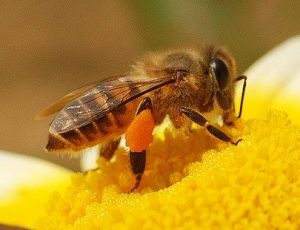Types of Bees
There are 4 main types of bees found in Singapore. The 4 types of bees are Giant Honey Bee (Apis dorsata), Dwarf Honey Bee (Apis andreniformis), Asian Honey Bee (Apis cerana) and Stingless Bees (Trigona).
Giant Honey Bee (Apis dorsata)
The Giant Honey Bee is the largest of the honey bee species. It is about 17-20mm long and their forewing length ranges from 12.5 to 14.5 mm. It can be found distributed throughout Southeast Asia. They usually have their hives build on exposed places that are high up from the ground. Unlike other honey bees, the giant honey bee can have several colonies clustered together. Some trees in Asia (known as bee trees) have been noted to house up to 50 nests on one tree. This type of honey bees are also known to travel around as the monsoon seasons change, building homes and honey reserves along the way.
Dwarf Honey Bee (Apis andreniformis)
The Dwarf Honey Bee is smaller and more slender than other honey bees. A foraging worker bee has a body length of approximately 7–10 mm, while the forewing length is between 6.0–6.9 mm. Similarly to the Giant Honey Bee, they build exposed honeycombs on trees and places high off the ground.
Asian Honey Bee (Apis cerana)
Asian Honey Bees are about 1 cm long and they have distinct yellow and black bands. They usually build their nests in enclosed areas. In nature, they usually build their colonies in old trees, holes and small caves. In man-made habitats, they sometimes build colonies in roof spaces or compression boxes etc. They are also known to be more resistant to disease and mites.
Stingless Bees (Trigona)
The stingless bees are smaller than other honey bees, they about 3-5mm long and have a slimmer body. Despite their name, they actually have stingers which are very small and cannot be used for defence. Stingless bee honey is also known to be twice as nutritious as normal honey. In the wild, they build their colonies in hollow trees and are similar to Asian Honey Bees in a way whereby they build their colonies in enclosed areas.








Recent Comments